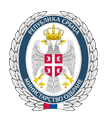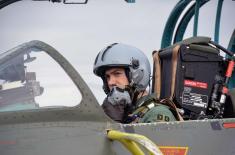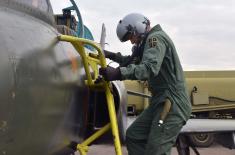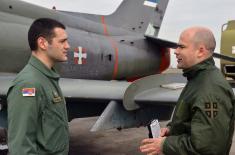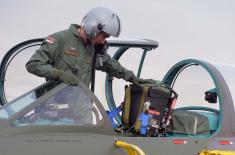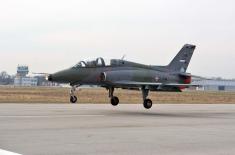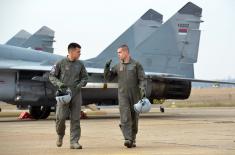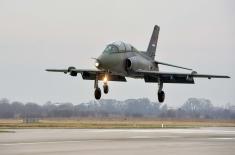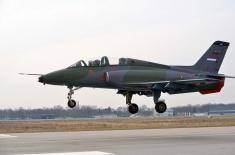03.03.2021.
Air Force – love and challenge
Vladimir Jovanović, a fifth-year student attending the Air Force Program of Study at the Military Academy, has had his first dual flight on G-4 aircraft with his instructor, Captain Aleksandar Živak.
– My first impression is that this is a very serious aircraft, but I feel content and I am looking forward to new flights and I hope that I will have lots of them – Cadet Jovanović says.
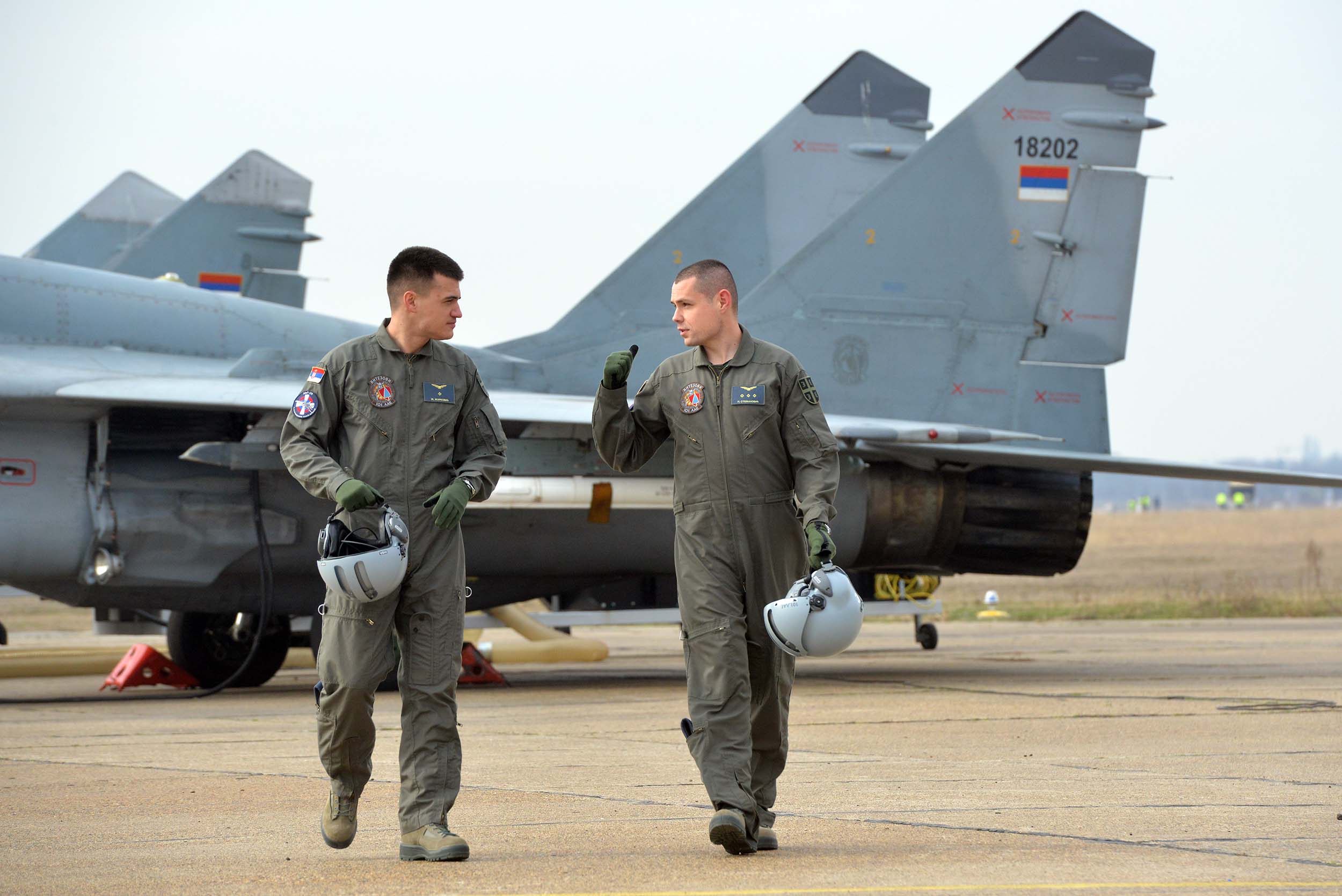 The road to the first flight on the G-4 Super Seagull aircraft is full of challenges; it starts with the candidate selection process for admission in the Air Force Program of Study. The selection process lasts for three months. First, the candidates undergo a six-day medical examination at the Military Medical Academy, and on the seventh day they undergo centrifuge tests at the airport in Batajnica. On the last day, it is determined whether a candidate is eligible for the Air Force Program of Study.
The road to the first flight on the G-4 Super Seagull aircraft is full of challenges; it starts with the candidate selection process for admission in the Air Force Program of Study. The selection process lasts for three months. First, the candidates undergo a six-day medical examination at the Military Medical Academy, and on the seventh day they undergo centrifuge tests at the airport in Batajnica. On the last day, it is determined whether a candidate is eligible for the Air Force Program of Study.Once the candidates complete these tests, they perform selective flights and parachute training, consisting of two jumps. Selective training also includes 10 hours of flight time, with instructors assessing candidates’ orientation. In the end, the results of all tests are added up and it is decided who continues to train as a pilot.
The third and fourth years of the Air Force program of study are reserved for flying on Lasta-95 trainer aircraft.
- At the Military Academy, we had the opportunity to try our hand at military mechanical engineering. We learned about the aerodynamics and aircraft flight performance, which provided us with a solid basis for gaining practical knowledge in aircraft management - Marko Stojančević, a Lasta-95 cadet pilot, points out.
Initial and basic training is carried out on the Lasta-type aircraft, and the aircraft itself, with its modern digital avionics and devices, provides training in basic, navigation, figure, instrument and night flying. In this way, the cadets complete excellent preparations for taking over the controls of the G-4 Super Seagull aircraft in the final, fifth year of studies.
Cadets who complete their training on the G-4 Super Seagull aircraft become members of the 204th and 98th Air Brigade squadrons. As young lieutenants, they have a series of goals, one of which is to become the MiG-29 pilots, which is a privilege and an honour, but also an obligation to constantly improve.
After theoretical preparations and a number of hours spent on the simulator, the young pilots can finally enter the pilot’s compartment of the MiG-29 aircraft and start training to become pilots of one of the most esteemed aircraft in the world.
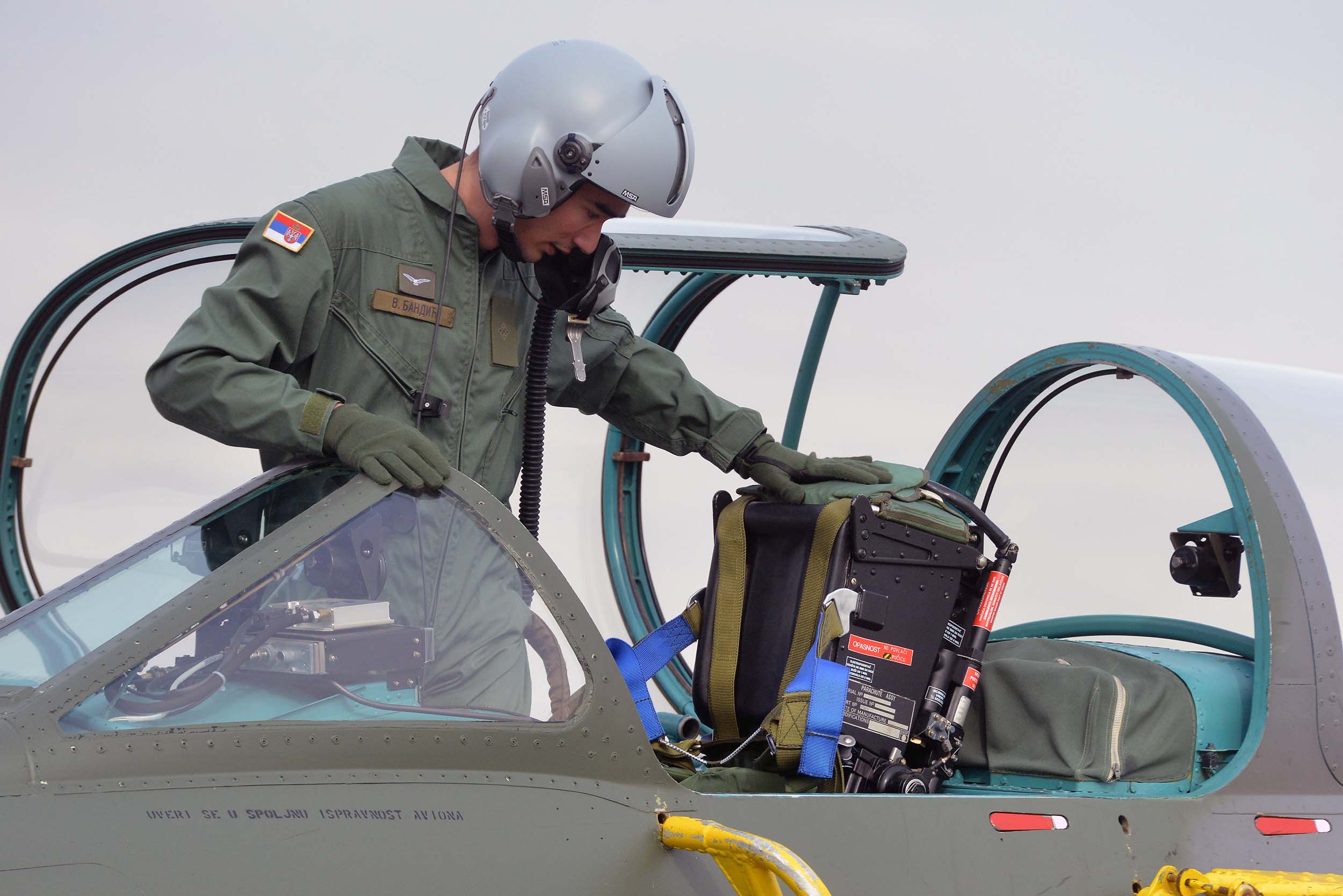 In 2020, Lieutenant Žarko Žarković transferred from the 252nd Training Squadron to the 101st Fighter Squadron, thus achieving his life goal.
In 2020, Lieutenant Žarko Žarković transferred from the 252nd Training Squadron to the 101st Fighter Squadron, thus achieving his life goal.- As a child I used to watch planes fly over my hometown, not far from the Batajnica airport, so I fell in love with airplanes when I was in the fourth grade of elementary school, and even then I decided to enrol in the Military Grammar School, and later join the Air Force Program of Study at the Military Academy. The love of flying and the love of the homeland put me on the right path where these two loves merge - explains Lieutenant Žarković.
The youngest pilot in the 101st Fighter Squadron is one of the three pilots who transferred from the 252nd Training Squadron and who are undergoing a retraining process for MiG-29 pilots. The retraining consists of a five-week technical training in the aircraft structure, the aircraft’s systems and their methods of application, followed by a two-week ground training, where they learn the techniques of piloting a MiG-29 aircraft. After seven weeks of theoretical instruction, trainees sit exams, both oral and written. The final stage in the retraining is the flight training on the MiG-29 aircraft.
Some pilots have had the opportunity to complete their training in the Russian Federation, where they learned how to pilot this aircraft. After graduating from the Military Grammar School, Captain Petar Stefanović, a pilot in the 101st Fighter Squadron, had the opportunity to study at the United States Air Force Academy in Colorado Springs. After the flight trainings he had in Serbia on V-53 Utva and G-4 Super Seagull aircraft, an unusual educational path took him to Russia to undergo the MiG-29 retraining.
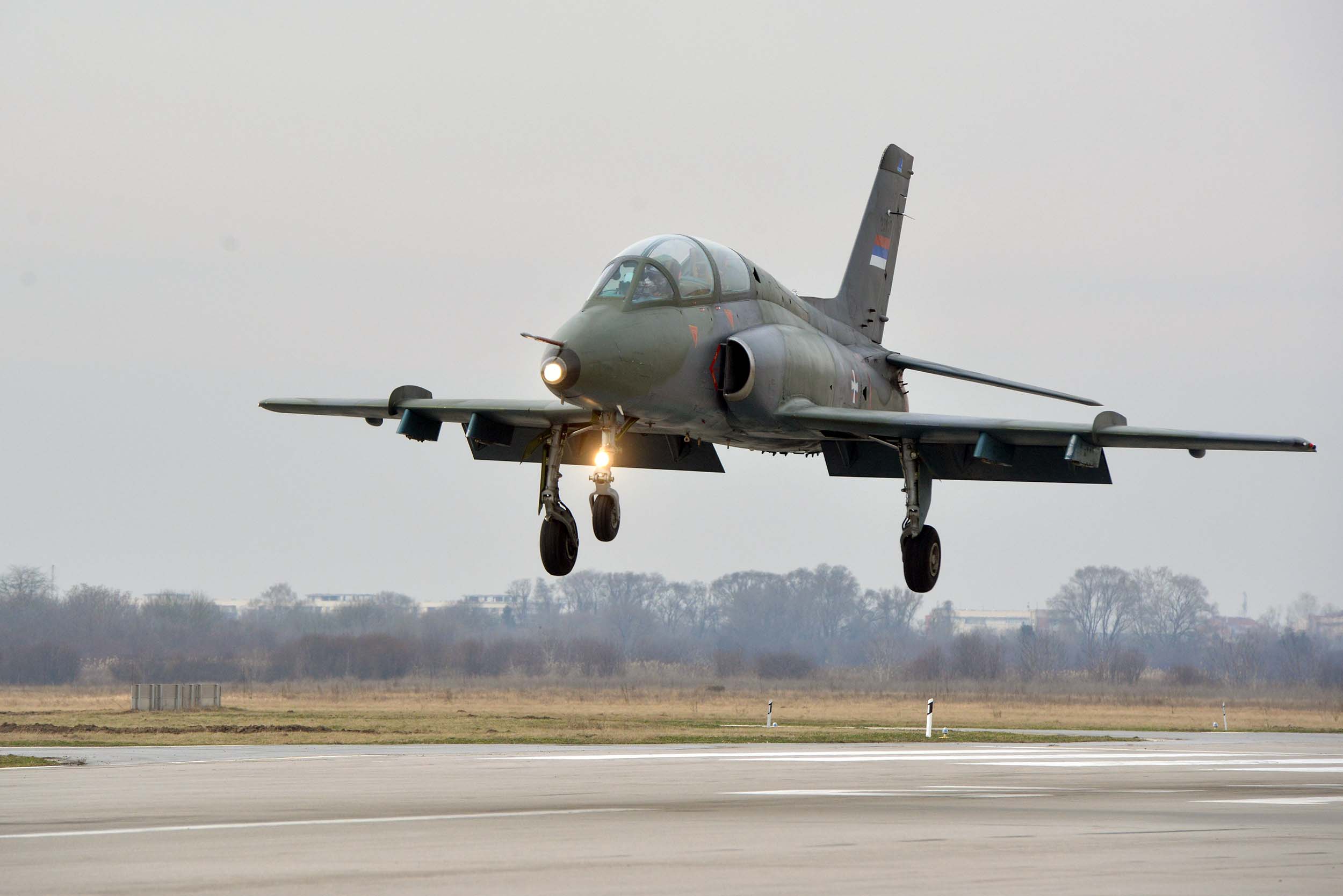 - In the Russian Federation, I had the opportunity to master the skills of basic and combat training, and to go there once again to do advanced flight training. They have large aviation centres and accordingly, the training was well structured and was characterized by a large number of flights - Captain Petar Stefanović points out.
- In the Russian Federation, I had the opportunity to master the skills of basic and combat training, and to go there once again to do advanced flight training. They have large aviation centres and accordingly, the training was well structured and was characterized by a large number of flights - Captain Petar Stefanović points out.Mastering new piloting techniques that are specific for each aircraft is Captain Stefanović’s motivation for further training.
- The feeling that you get when you master a new piloting technique is unique, which is a kind of motivation for further progress and competing with yourself - emphasizes Captain Stefanović and adds that being a military pilot is a job for highly motivated people who want to constantly compete with themselves and who want to master a skill that is not at all easy, while cooperating with wonderful people and making friends for life.
 PHOTOGALLERY
PHOTOGALLERY